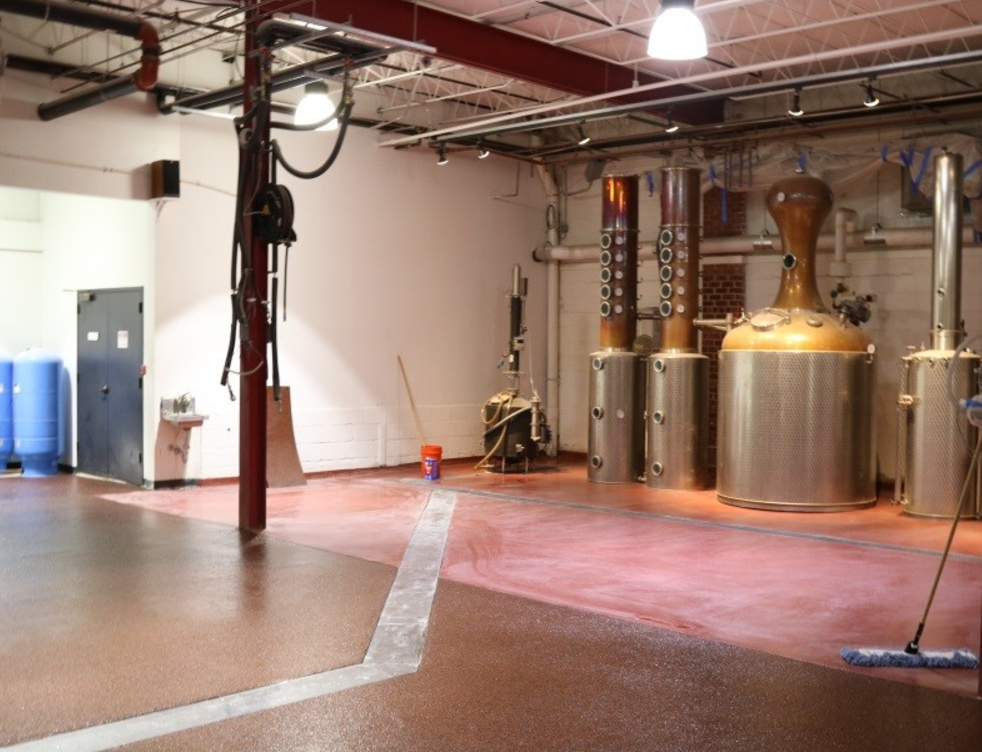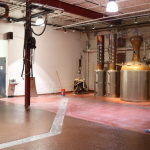Are you constantly battling with clogged or foul-smelling floor drains? This post delves into the essentials of floor drain maintenance, the latest technologies in the field, and practical steps for upgrading your plumbing fixtures. Discover how innovations like stainless steel components and smart trap primers can transform the way you handle maintenance, leading to a more efficient and sustainable approach. We’ll also guide you through developing a proactive plan to keep your drains in top condition, saving you time and the hassle of dealing with plumbing emergencies. By integrating these strategies, you’ll not only enhance the performance of your concrete allies but also prevent future complications with just a wrench and some know-how.
Understanding the Essentials of Floor Drain Maintenance
Keeping a floor drain in optimal condition is crucial for any household or commercial space. Neglected drains can lead to a host of problems, from unpleasant odors to severe plumbing issues. Regular maintenance not only extends the lifespan of floor cleanouts but also ensures that mop sinks, toilets, and tiled areas remain functional and hygienic. Recognizing early warning signs of drain issues can prevent costly repairs and maintain the integrity of your plumbing system. This section delves into the common challenges associated with floor drains, the benefits of routine upkeep, and the indicators that signal a need for immediate attention.

Common Problems Arising From Neglected Drains
When a basement drain backs up, it often signals a deeper issue within the plumbing system, such as a blockage or backflow problem. This can result in water damage, particularly in areas like bathrooms and kitchens where drainage is critical. Homeowners may notice water pooling around floor drains or a slow drain in the washing machine, which are clear indicators that the floor drain requires immediate attention to prevent further complications.
Ignoring the maintenance of floor drains can lead to a series of plumbing woes, including the unpleasant experience of foul odors permeating living spaces. In kitchens, the accumulation of grease and food particles can cause clogs that not only hinder water flow but also attract pests, creating an unsanitary environment. Bathrooms are equally susceptible, where hair and soap scum build-up can result in persistent blockages, demanding prompt intervention to restore proper drainage and hygiene.
How Regular Maintenance Extends Drain Lifespan
Consistent upkeep of floor drains, including regular cleaning and inspection, can significantly prolong their functionality. By routinely removing debris and ensuring the floor drain trap maintains a proper seal, one can prevent the common issue of dry traps that lead to sewer gas leaks into the building. The installation of a backflow prevention device is also a wise measure, safeguarding against potential flooding and protecting the integrity of the plumbing system. These practices not only extend the lifespan of the drains but also contribute to the overall sanitation of the environment.
Moreover, when one considers the diameter and material of the floor drain—often ABS or PVC—regular maintenance becomes even more critical. A drain with a smaller diameter is more prone to clogs, which can be mitigated through frequent cleaning to ensure a free-flowing system. By investing a few gallons of water for routine flushes and inspections, property owners can avoid the costly and disruptive process of replacing a compromised drainage system, thereby ensuring its longevity and reliability.
Identifying Early Warning Signs of Drain Issues
Spotting the early signs of drain issues is key to preventing major plumbing disasters. If you detect a persistent, foul odor emanating from your basement drain or shower grates, it’s often a telltale sign that your floor drain system requires immediate attention. This unpleasant smell could indicate a dry trap or a buildup of organic waste, which can corrode iron pipes and compromise the entire system. Quick detection and response can save homeowners from costly repairs and replacements.
Another indicator of potential drain problems is a change in the drainage rate. If water pools for longer than usual around your shower grates or basement drain, it may suggest a blockage or an issue with pipe size that restricts water flow. Observing how quickly water drains can provide valuable insights into the health of your plumbing system, allowing for timely maintenance and ensuring the efficiency of your floor drains.
Innovative Technologies Transforming Drain Maintenance
The landscape of floor drain maintenance is evolving with the advent of advanced cleaning equipment, smart sensors, and robotics. These innovations offer efficient results in drain installation and upkeep, particularly for showers and other plumbing fixtures. Plumbers now have access to tools that not only simplify the removal of screws and debris but also provide real-time monitoring and thorough inspections. Each of these technologies plays a pivotal role in streamlining maintenance processes, ensuring drains remain clear and functional.
Advanced Cleaning Equipment for Efficient Results
Modern advancements in pump technology have revolutionized basement drain cleaning, offering powerful solutions that swiftly clear blockages and maintain sewer health. These pumps, often crafted from durable materials like bronze, are designed to handle the rigors of laundry and bathroom waste without faltering, ensuring a clean and efficient drainage system.
For those grappling with persistent clogs and slow drains, the latest sewer cleaning equipment provides a much-needed respite. These tools not only expedite the removal of stubborn debris but also minimize the downtime of essential facilities, such as basement and laundry areas, enhancing the overall maintenance process with their effectiveness and reliability.
Smart Sensors for Real-Time Drain Monitoring
Smart sensors are revolutionizing the way property owners manage floor drain maintenance, particularly in systems involving water heating and cast iron components. These sensors, installed directly into the hub of a storm drain or stainless steel mop sink, provide real-time data on flow rates and blockages, alerting owners to potential issues before they escalate into costly repairs.
The integration of smart sensor technology into floor drain systems offers a proactive approach to plumbing maintenance. By continuously monitoring conditions, these sensors can detect subtle changes that may indicate a developing clog or backup, allowing for immediate intervention and ensuring the longevity and efficiency of both residential and commercial drainage systems.
The Role of Robotics in Drain Inspection
Robotics are making significant strides in the field of drain inspection, particularly for trench drains and floor sinks. Equipped with high-resolution cameras and sensors, these robots can navigate through pipes, providing a detailed view of the gasket, flange, and overall condition of the floor sink drain. This technology allows for early detection of potential issues, reducing the need for invasive maintenance and ensuring the longevity of plumbing systems.
The practical application of robotics in floor drain maintenance is transforming the way professionals approach inspections. By deploying these advanced tools, plumbers can quickly identify blockages or wear and tear on components such as the flange or gasket, enabling precise interventions. This not only streamlines the maintenance process but also offers property owners peace of mind, knowing their floor sink drains are under vigilant robotic scrutiny.
Upgrading Floor Drains for Optimal Performance
Upgrading floor drains is a strategic move to enhance plumbing efficiency and prevent common issues like a basement drain clogged. Utilizing materials that improve durability and flow efficiency, retrofit solutions can rejuvenate existing drain systems. Incorporating backflow prevention mechanisms and self-cleaning drain designs offers significant benefits, ensuring sink and plumbing systems remain clear and functional. These upgrades, compatible with both plastic pipework and traditional piping and plumbing fittings, represent a forward-thinking approach to drain maintenance.
Materials Improving Durability and Flow Efficiency
When considering the installation of new floor drains or upgrading existing ones, the choice of materials is paramount for ensuring durability and water flow efficiency. Acrylonitrile butadiene styrene (ABS) is a robust thermoplastic that offers superior resistance to impact, which is essential in high-traffic areas. Its smooth interior surface enhances water flow, reducing the likelihood of backups and making it a preferred choice for waterproofing and long-term plumbing performance.

Moreover, the integration of ABS in floor drain systems has been a game-changer for both residential and commercial installations. This material not only withstands the aggressive chemicals often found in cleaning products but also provides a reliable seal against water ingress. Property owners benefit from a maintenance-friendly solution that minimizes the risk of leaks and ensures a consistent, high-quality drainage experience.
Retrofit Solutions for Existing Drain Systems
Retrofit solutions for existing drain systems offer a practical approach to enhancing sewage management and preventing floods. By installing advanced strainers and traps in a floor mop sink, property owners can significantly reduce the risk of clogs and the need to unclog basement drains frequently. These upgrades are designed to seamlessly integrate with existing pipes, providing a cost-effective alternative to complete system replacement while improving overall efficiency and reliability.
For those facing persistent sewage backups, retrofitting can be a game-changer. It allows for the incorporation of backflow preventers and improved pipe diameters, which are crucial in mitigating flood risks and ensuring a smooth sewage outflow. These enhancements not only safeguard the property but also contribute to a more hygienic environment by maintaining clear and functional floor mop sinks and drainage systems.
Incorporating Backflow Prevention Mechanisms
Incorporating backflow prevention mechanisms into basement floor drainage systems is a critical upgrade for safeguarding water supply quality. These devices prevent contaminated water from reversing through the pipes and entering the clean tap water, a common concern in basement environments where flooding can occur. By installing a backflow preventer, homeowners ensure that their basement remains dry and their family’s health is not compromised by backflow incidents.
Effective backflow prevention is essential for maintaining the integrity of a home’s water supply and drainage system. When upgrading floor drains, especially in areas prone to heavy rainfall or flooding, the addition of a backflow valve can provide peace of mind. It acts as a barrier against the backflow of sewage into the basement, protecting the property from potential water damage and contamination, and ensuring a cleaSet featured imagen and efficient drainage system.
Benefits of Self-Cleaning Drain Designs
Self-cleaning drain designs are revolutionizing floor maintenance, significantly reducing the likelihood of water damage and the accumulation of debris. These innovative systems utilize a combination of gravity and water flow dynamics to automatically expel waste, ensuring that steel and plastic components remain free from obstruction. This advancement in construction technology not only simplifies upkeep but also enhances the longevity of the drainage system, providing a practical solution for busy homeowners and commercial property managers.
The integration of self-cleaning mechanisms into floor drains offers a safeguard against the common challenges of clogging and maintenance. By continuously clearing away sediment and waste, these designs prevent the build-up that often leads to costly repairs and water damage. Property owners benefit from a maintenance-free solution that maintains optimal performance, ensuring that their floor systems operate efficiently without the need for frequent manual cleaning.
Conclusion
Efficient floor drain maintenance is vital for preventing plumbing disasters, ensuring hygienic conditions, and extending the lifespan of drainage systems. Upgrading to innovative technologies like smart sensors and self-cleaning designs not only streamlines maintenance but also enhances system performance and sustainability. By adopting proactive maintenance plans and eco-friendly practices, property owners can safeguard against costly repairs and contribute to environmental conservation. Ultimately, the integration of advanced solutions and regular upkeep is a strategic investment in the longevity and reliability of plumbing infrastructures.



